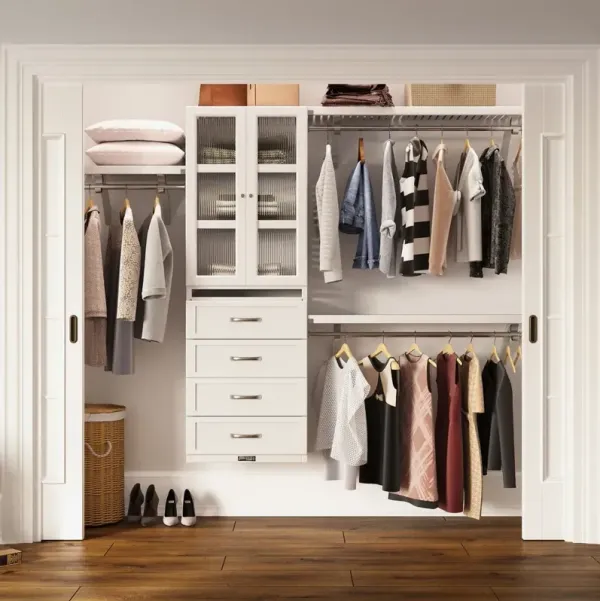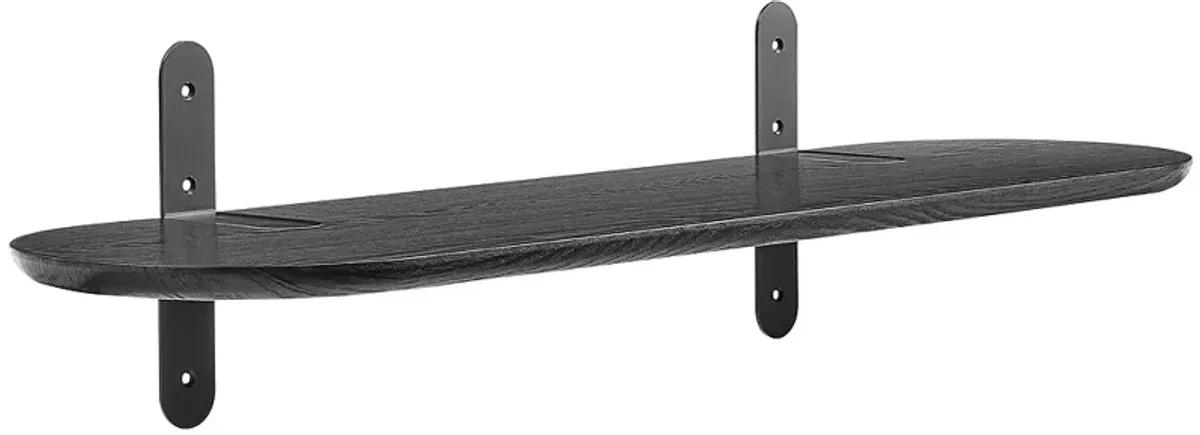Shelving Guide
Shelves are the stylistic storage component that every home needs. Unlike a standard bookcase, shelving adapts to any type of space. Save room, showcase your keepsakes, or add a creative accent to your walls with shelves. Read on to learn more about selecting the perfect shelves for your home.
Determine the Purpose of Your Shelves
Shelves serve many purposes, from keeping your items and essentials organized and accessible to serving as a beautiful decor addition to your house. When deciding on what shelving style or size will serve you best, analyze the purpose they need to fulfill.
1. Style vs function
Do you intend for your shelves to be functional or stylish? If they are a stylistic addition to your interior design, lean into the color and material that suits your needs. If the shelves are needed to store and organize rather than look aesthetically pleasing, focus on size and durability.
2. Determine the weight your shelves need to hold
Next, determine the weight capabilities of your shelves. If they are serving a functional purpose, they need a higher weight rating. If they are serving a more decorative purpose, they may not need to be as sturdy.
3. Consider the depth of the shelves
Lastly, consider the items you are placing on your shelves. This determines the depth of the shelves needed. If you are simply looking for display shelves, then you need to ensure the depth of the shelf accommodate your pieces. If you are placing books or other large items, your shelves must be large enough to easily store these items without anything falling off the edge.
Shelving Placements in the House
Bedroom
From a way to display your personal collectibles to a usable space to place your daily essentials, shelves in the bedroom serve a multifunctional purpose. Place them in the bathroom to store miscellaneous pieces.
Living room
Living room shelves are an opportunity to let your style and personality shine. Choose a material and color that reflects your aesthetics and preferences and showcase your favorite items. Whether you opt for a curated look with architectural pieces and plants or prefer an eclectic feel displaying the items you love, a small shelving unit is a great living room addition.
Home office
In your home office, you may need a blend of professional-looking shelves that are both decorative and functional. From a small wall shelf that looks good in your camera background with a plant and art print, to a full-sized storage unit that houses books, binders, and office supplies, there are many different types of shelves that can look great in the office.
Kids room
Shelving in a kid’s room is a great way to display your little one’s favorite toys, collectibles, and special things. Set them up as a surprise, or work together to curate a shelf that your child loves.
Dining room & kitchen
Dining room or kitchen shelves serve a more functional purpose. Whether you are storing cups, plates, or other serving essentials, shelves are a great storage addition to these spaces.
Different Types of Shelves
Determine which type of shelves you need by figuring out your home’s aesthetic. Decide if you want your shelves to blend into your design or create contrast. Then, consider your storage needs. Do you need ultra-functional shelves, or are you more interested in creating a style statement? Once you determine the style and function of shelves you need, it’s time to pick out your shelving type.
Freestanding Shelves
Freestanding shelves are the most common type of shelving and resemble the size and shape of a bookshelf. They are not fixed to anything and stand on their own. Free Standing shelves come in many different materials and styles, from finishes of modern chrome and glass to a beautifully carved wood.
Narrow Shelves
Narrow shelves are freestanding shelves that are designed to not take up as much space. With the same styles and materials, they easily draw the eye and enhance the focus on the displayed items.
Wall Shelves
Wall shelves are attached to a wall and come in different sizes and shapes. They often are eye-catching pieces meant to display decor, plants, and other small pieces.
Floating Shelves
A floating shelf is mounted to the wall with no visible support and gives the appearance of floating in the air. They are commonly made of chrome, burnished bronze, or wood and pair beautifully in minimalist design spaces.
Storage Cubbies
Storage cubbies are a shelving design that is perfectly suited for storing decor, books, or fabric cube storage cubes. They feature a more modern design and fit well into smaller spaces.
Modular Shelving
Modular shelves feature individual modular units that can be stacked, connected, or configured in myriad ways.
Popular Shelving Materials
Not all shelving units are created equal — opt for a material that will be durable enough to suit your needs.
Wood
One of the most common options, wood shelves can be stained, painted, or left natural depending on what look you’re going for. Avoid soft woods, like pine or oak, which can dent or scratch more easily.
Particleboard
A true workhorse, particleboard shelving units are knot-free and heavy duty, making them ideal for storing larger items or breakables.
Glass
Glass shelving can provide a minimal, sleek aesthetic, though tends to be heavier and more prone to breaking.
Metal
Steel or wire shelves are a versatile, durable storage option.
Plastic
Durable and easy to clean, plastic shelves have the additional benefits of not chipping or rusting.
Add Style and Appeal with Shelving
From giving your favorite pieces a place to shine and draw attention to keeping all your essentials stored and organized, shelving offers multipurpose functionality in your home. If you’re ready to add more style and appeal to your home with shelving, shop our curated collection of shelving at furniture.com.






















